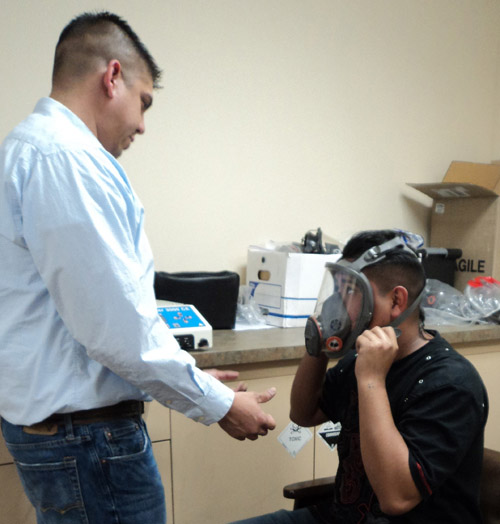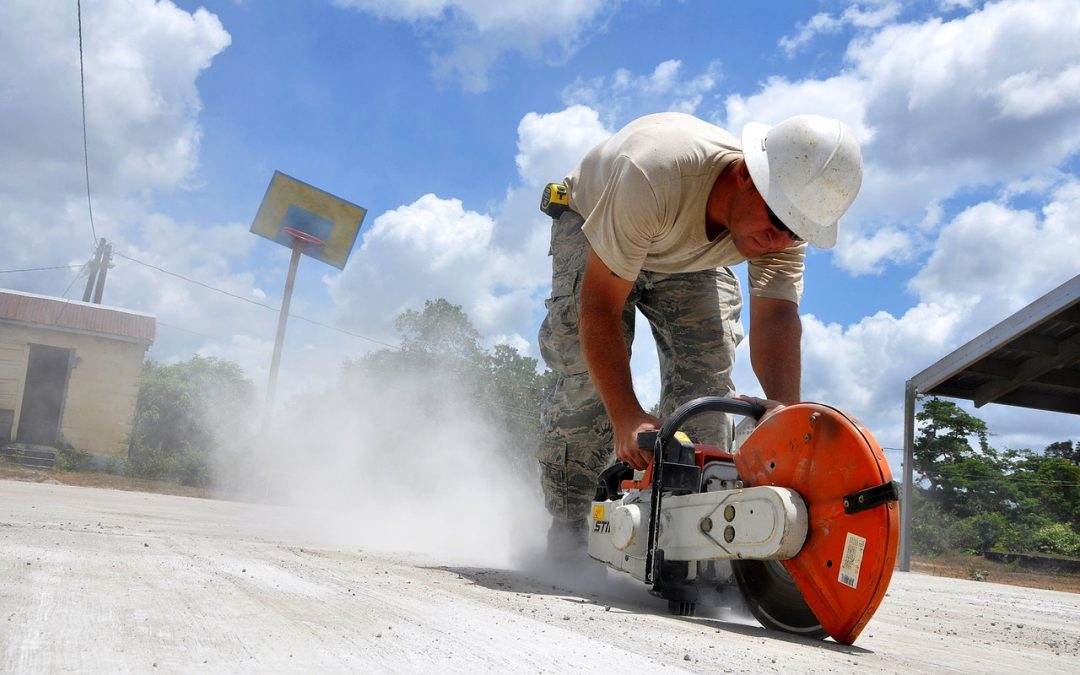OSHA’s crystalline silica rule has been finalized. There are separate requirements for general industry/maritime and construction.
First, How Do You Become Exposed to Silica?
Crystalline silica can cause respirable and kidney disease and some cancers. Crystalline silica is a basic component of sand, soil, granite and many minerals. Common forms include quartz, cristobalite and tridymite. It becomes respirable when it is cut, ground, drilled or chipped.
In general industry and maritime, silica is associated with industries such as concrete and ready-mix concrete products, cut stone, foundries, support for oil and gas operations, railroads, asphalt roofing materials, jewelry, dental labs, porcelain enameling, shipyards, structural clay and pottery.
In construction, silica exposures come with working with materials containing silica. Grinding, drilling, sawing, cutting or chipping concrete, stone, cement or cement fiberboard would all be examples of potential silica exposures.
Requirements Applicable to Both General Industry/Maritime and Construction
The general industry/maritime and the construction regulations share some requirements including:
- Written Exposure Control Plan — Your company must prepare and implement a written exposure control plan that identifies tasks which could create exposures and the methods your company will use to protect workers.
- Housekeeping — Housekeeping practices such as dry sweeping, dry brushing, and the use of compressed air (unless used in conjunction with a ventilation system) which expose workers to silica where feasible alternatives are available is not allowed.
- Training — Worker training in silica exposure is required. Workers must be able to demonstrate: knowledge of hazards, specific tasks which could cause exposures, the employer’s methods of controlling exposures, information from the standard and the purpose and description of the medical surveillance program. To help document demonstration of knowledge, you may want to give a quiz.
- Recordkeeping — Your company must keep detailed records of silica exposure and medical exams on file. For general industry/maritime, it’s all detailed exposure sampling records. How your company chooses to comply with the standard will determine which records you keep.
What’s Unique to Each?
We have written separate blog posts about the general industry and construction rules. Go to: CONSTRUCTION GENERAL INDUSTRY
Now What? How Can iSi Help You With This Standard?
iSi is here to help your company comply with this new standard. We can assist with:
- Compliance Determinations, Audits and Checklists – Helping you determine if this standard applies to you, evaluating your site for exposure potential, determining areas needing warning signs or restricted access, and making a compliance checklist for you
- Exposure Sampling – Sampling your facility or construction sites for exposure levels, arranging for lab analysis of samples, preparing documentation for recordkeeping, and preparing your written employee notices
- Written Program Development – Preparing your exposure control plan or respiratory protection program
- Training – Silica training and respiratory protection training
- Respirator Fit-Testing – Annual respirator fit-testing (after your medical surveillance is complete)
- Answering Questions – Our safety and industrial hygiene experts on-staff can help you with any other questions you may have.
Contact us today or watch our free webinar about the changes using the link below.

